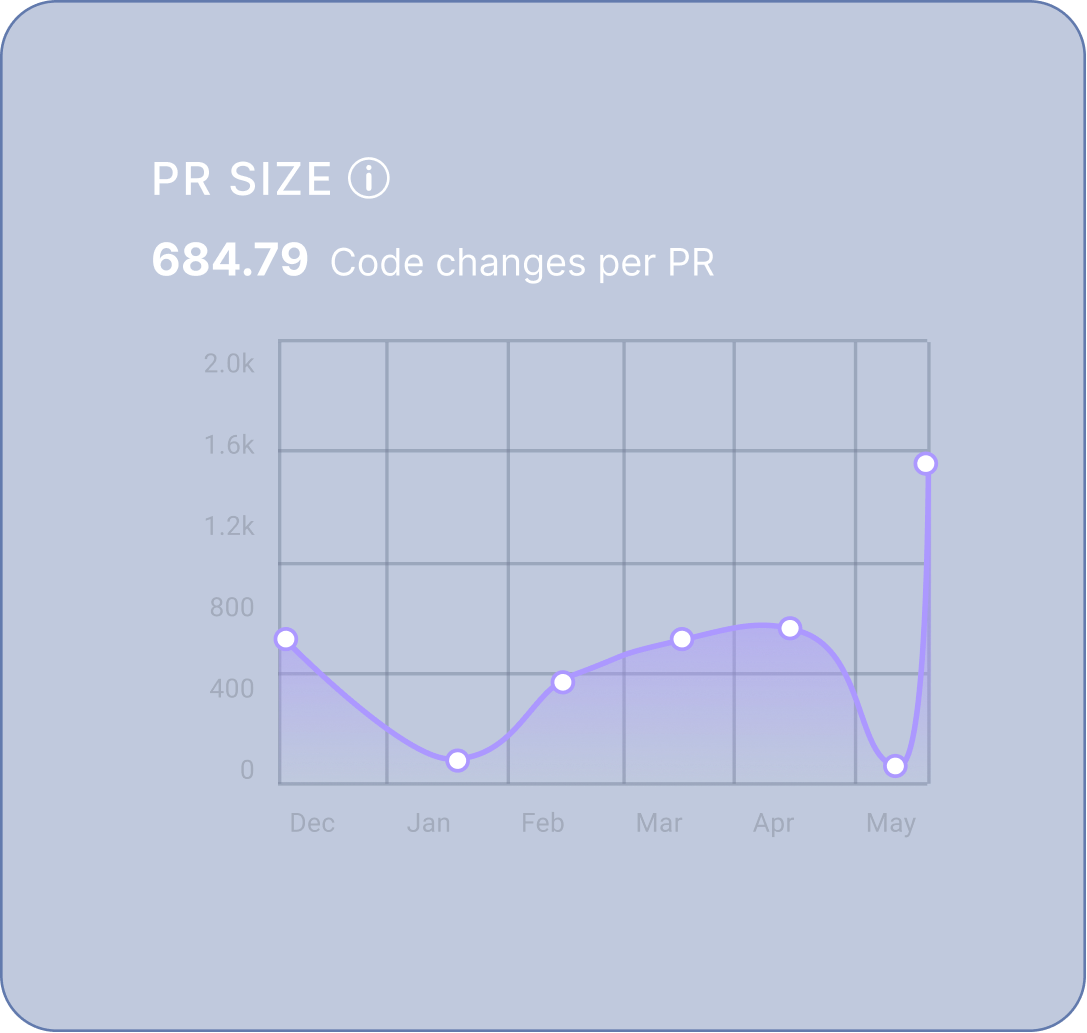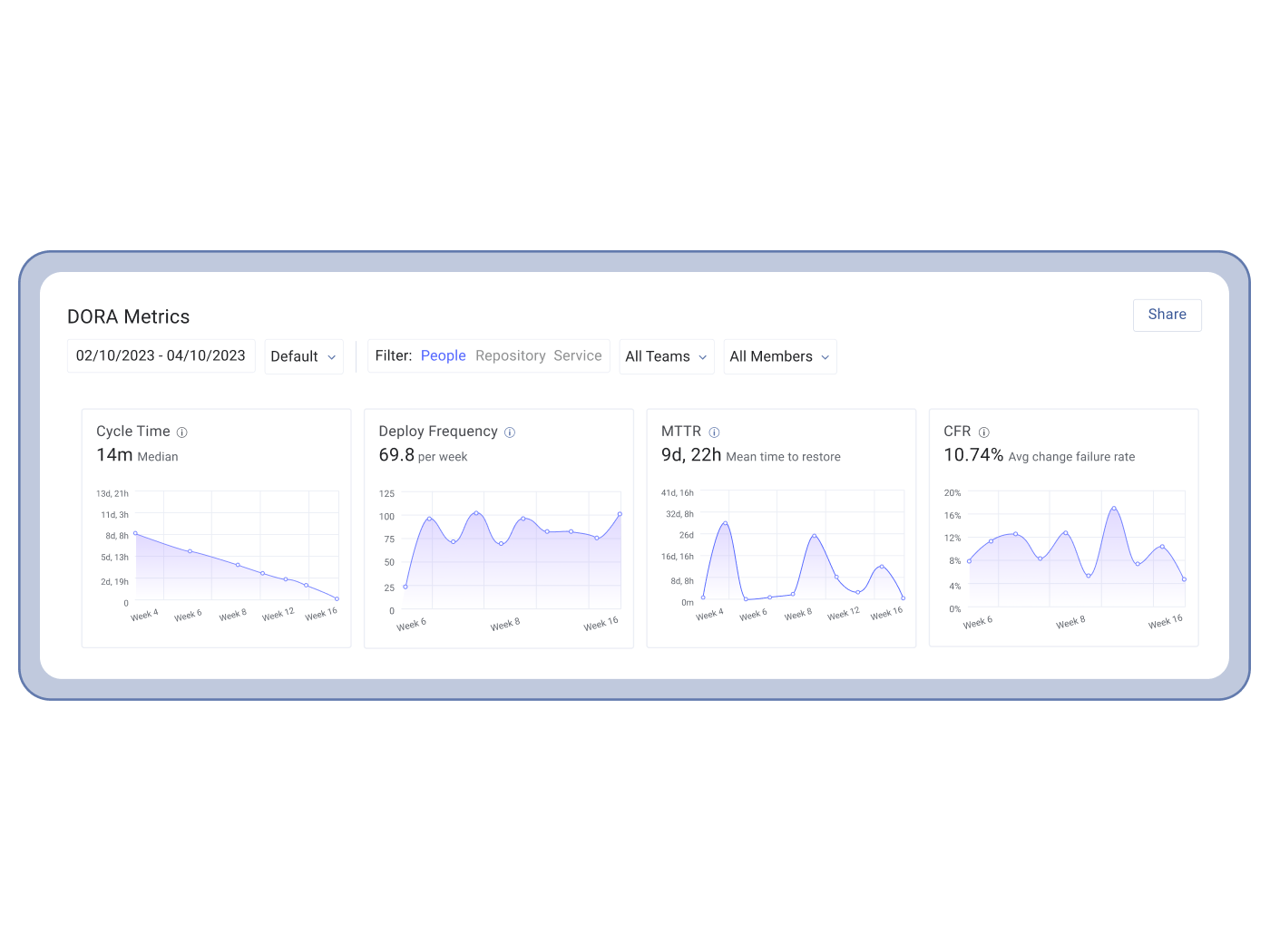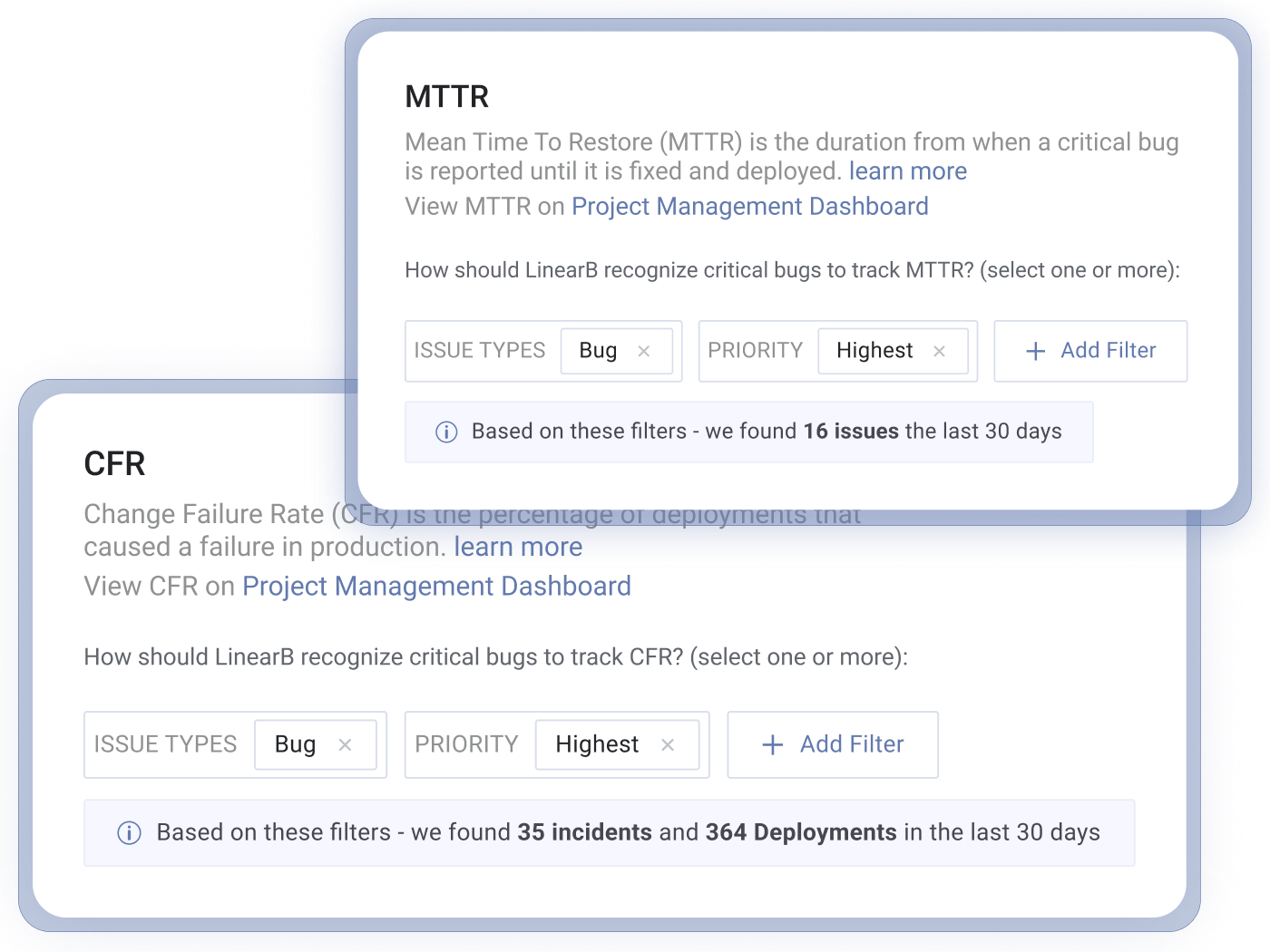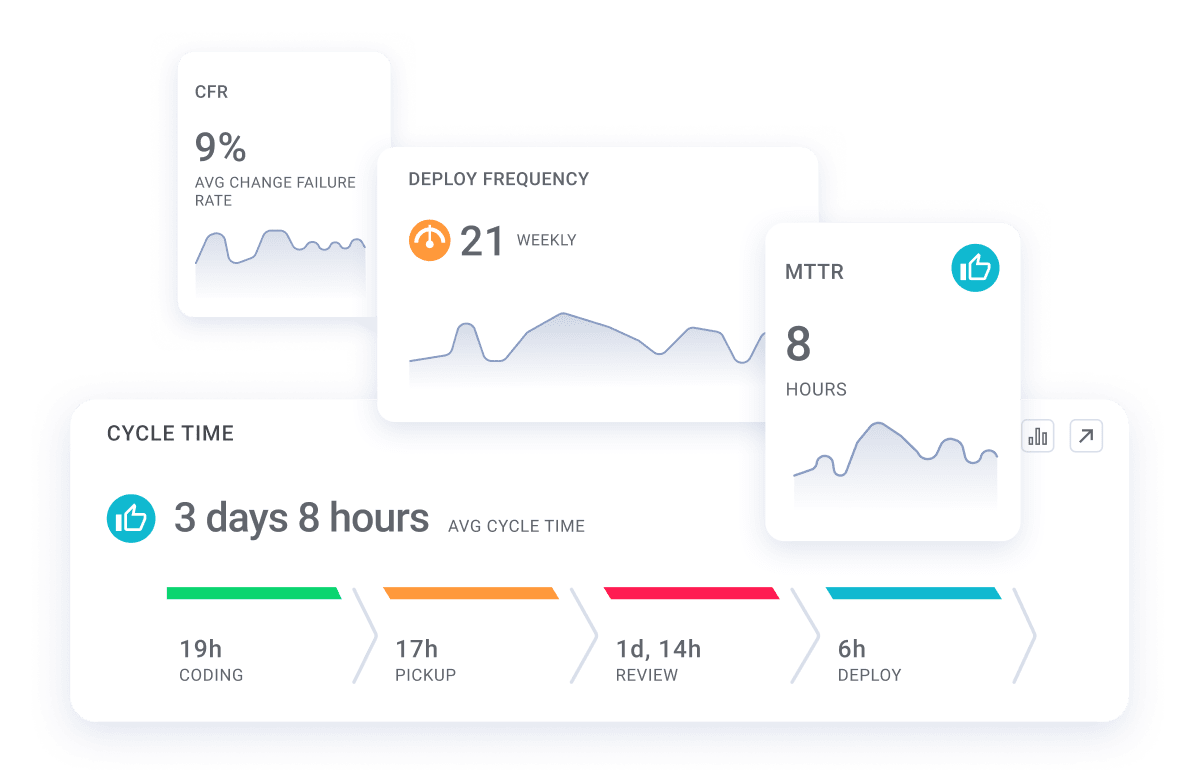
Software Delivery Management for Engineering Leaders
Data-Driven Engineering Starts with DORA Metrics
Take the first step in building your engineering metrics program. Get started in minutes - no credit card required.
Engineering Leaders Trust LinearB to Improve Their Team's ROI
Get Your ROI Report

"I no longer need to calculate metrics by hand. LinearB has allowed me to focus on key metrics like DORA to understand how my team is doing.
Accurate DORA metrics contributes to changing the culture in our organization and allows us to drive the Engineering team in the direction the company wants to go.”

Corey O.
VP of Engineering
DORA Metrics Are Free With LinearB
Actively monitoring DORA metrics is a critical first step in any initiative to
improve engineering’s operational efficiency and impact on the business.
Get FREE DORA
Quickstart Guide: Your Path to DORA Excellence
A comprehensive guide to getting started with your Free LinearB account and leveraging DORA metrics to build an elite engineering organization.
Inside you’ll find:
A refresher course on DORA metrics
How to set up your free LinearB account in < 5 mins
A 4 step guide to diagnosing bottlenecks & building an improvement strategy
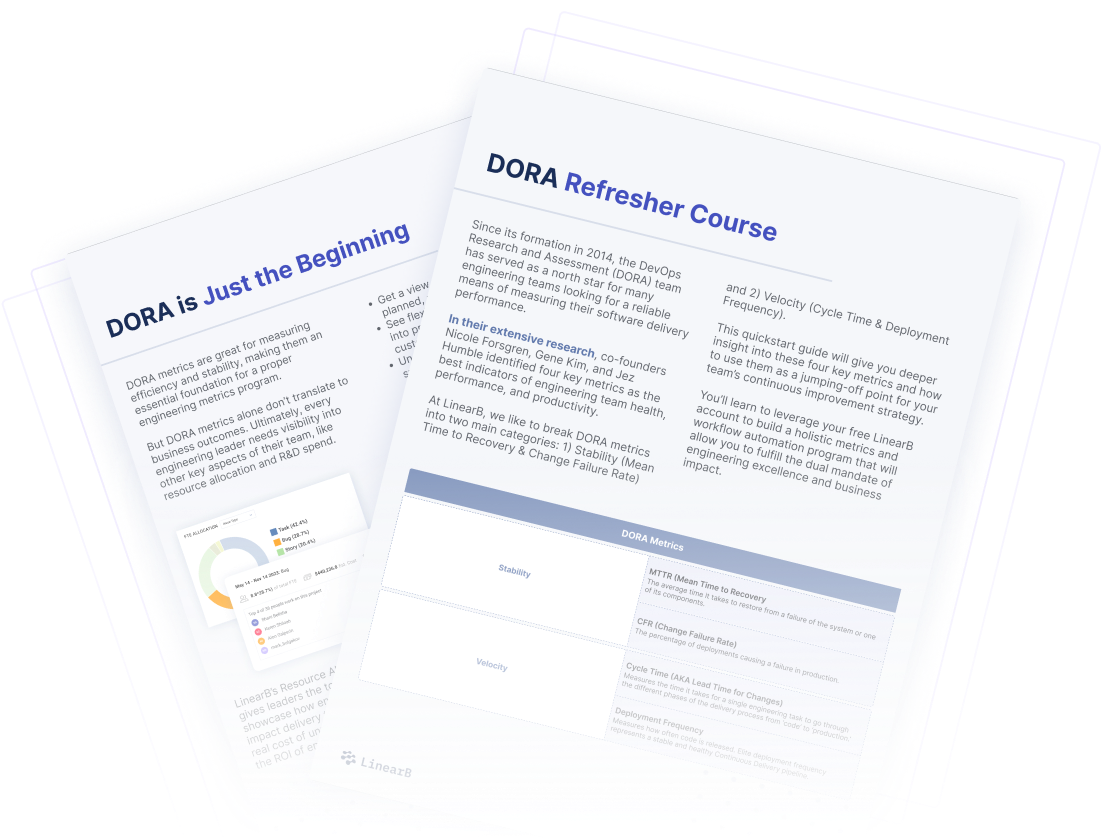
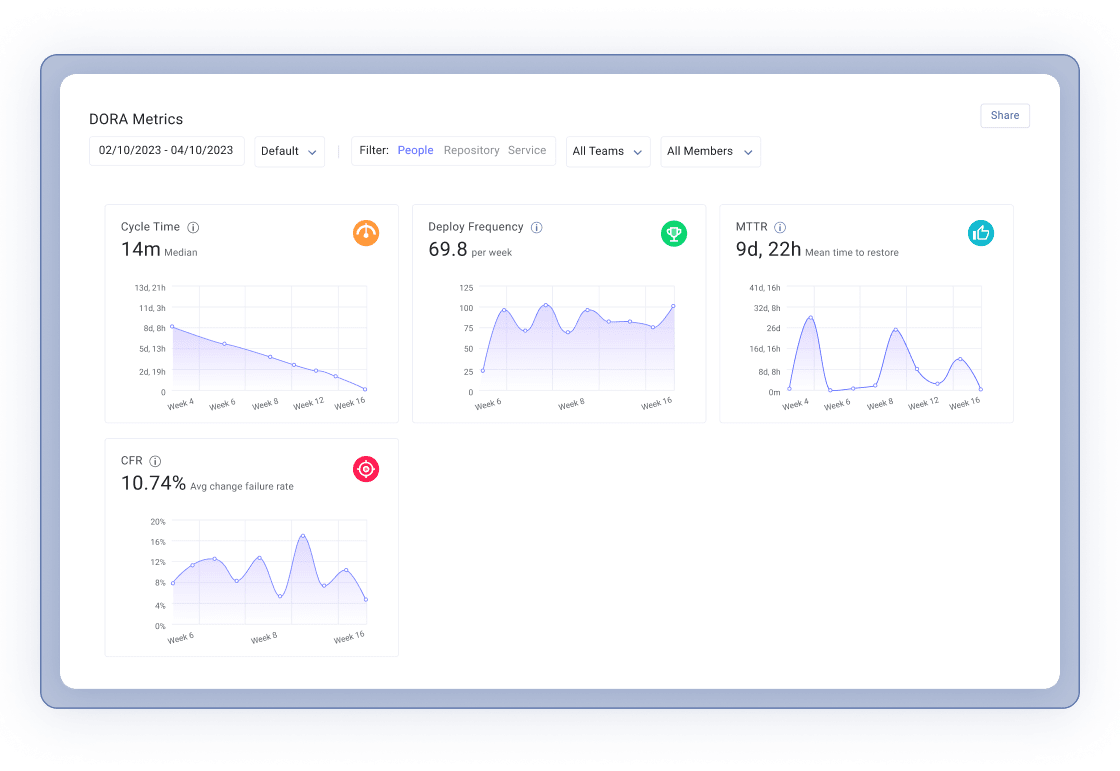
Is your engineering team flying blind?
Aligning your team investments to business outcomes is a challenge for many engineering leaders. And without data, you don’t stand a chance.
Understanding your DORA metrics is the first step to building a comprehensive metrics program that actually answers the question of how your team is working.
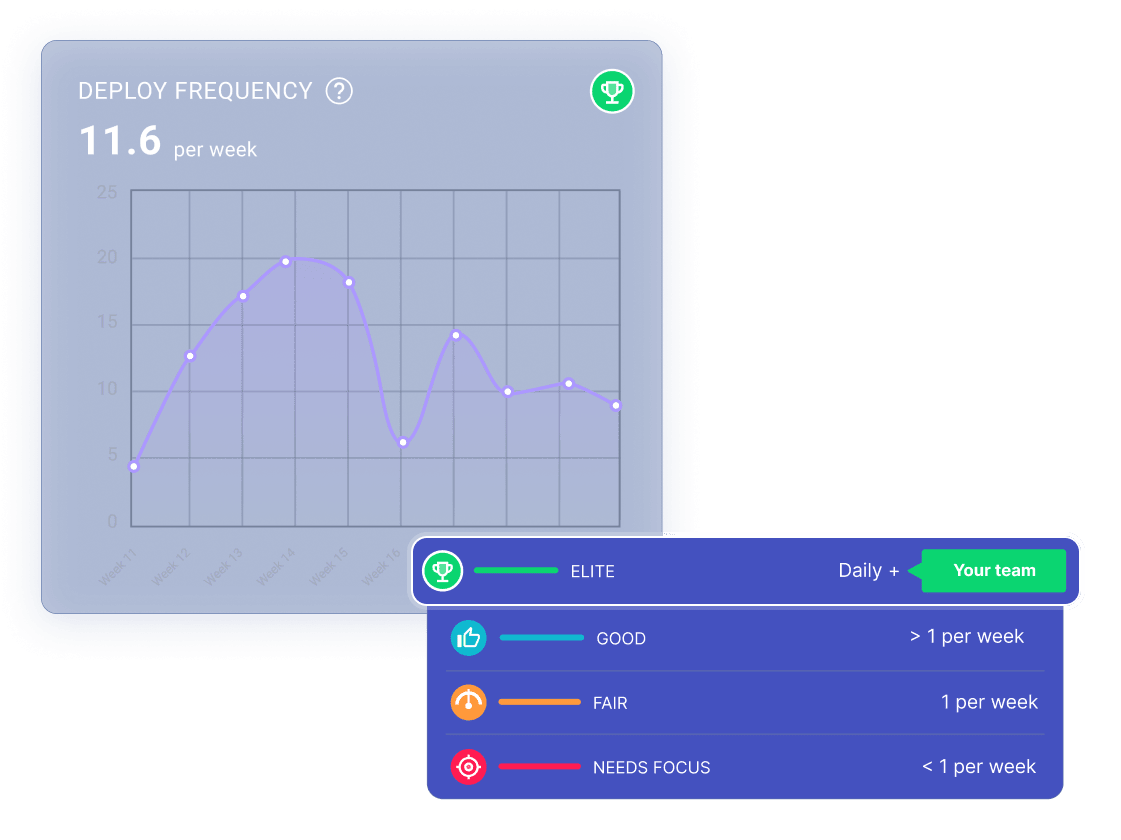
Understand how your team is performing
Simply connect your repos and project management board through a simple configuration that can be completed in minutes.
Now you can measure your team’s health across key metrics such as Cycle Time, Deployment Frequency, Mean-Time-to-Restore, and Change Failure Rate.
Set smart goals then blow them away
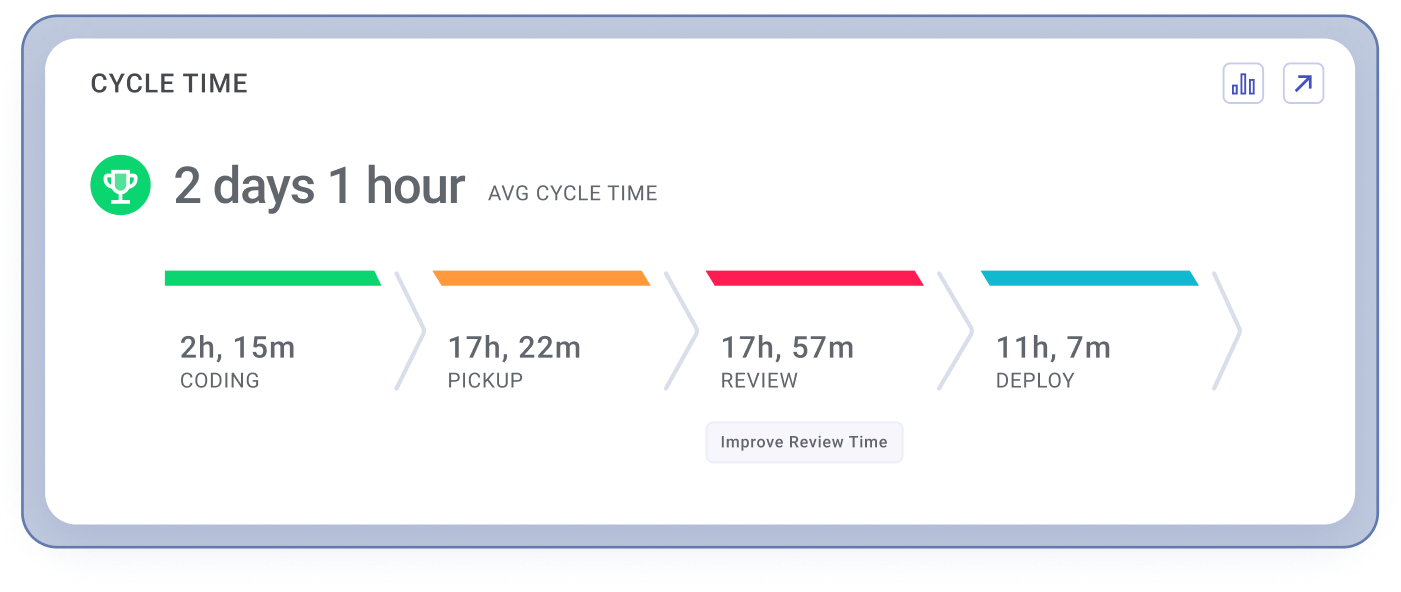
Cycle Time
The amount of time it takes for code to get into production
Deployment Frequency
How often an organization successfully releases to production
Mean Time To Restore
How long it takes an organization to recover from a failure in production
Change Failure Rate
The percentage of deployments causing a failure in production
DORA 101
Google’s DevOps Research and Assessment team (DORA) identified four metrics that are the best indicators of engineering team health, performance, and productivity.
Broken into velocity (Cycle Time & Deployment Frequency) and stability (MTTR & Change Failure Rate), DORA metrics are a critical part of every engineering team’s continuous improvement strategy.
Read the Engineering Leader’s Guide to Starting a Metrics Program to get started today:
Read the Guide
6 Steps to DORA Excellence
1
Create Your Free Account
2
Connect Your Repos
Configure any needed branch exclusions and your PM tool.
3
Configure Your Metrics
MTTR, CFR, Incident Detection, Coding Time, and Release Detection.
4
Add Teams and Groups and Link Boards
Verify any duplicate team members have been merged.
5
Create a 90 day baseline and compare it to your peers
Identify areas for improvement: Efficiency, Quality, or Both.
6
Customize your dashboard
Segment data by team, label, repo, and service.
Get your DORA Metrics in Minutes
Actively monitoring DORA metrics is a critical first step in any initiative to
improve engineering’s operational efficiency and impact on the business.
Get FREE DORA
